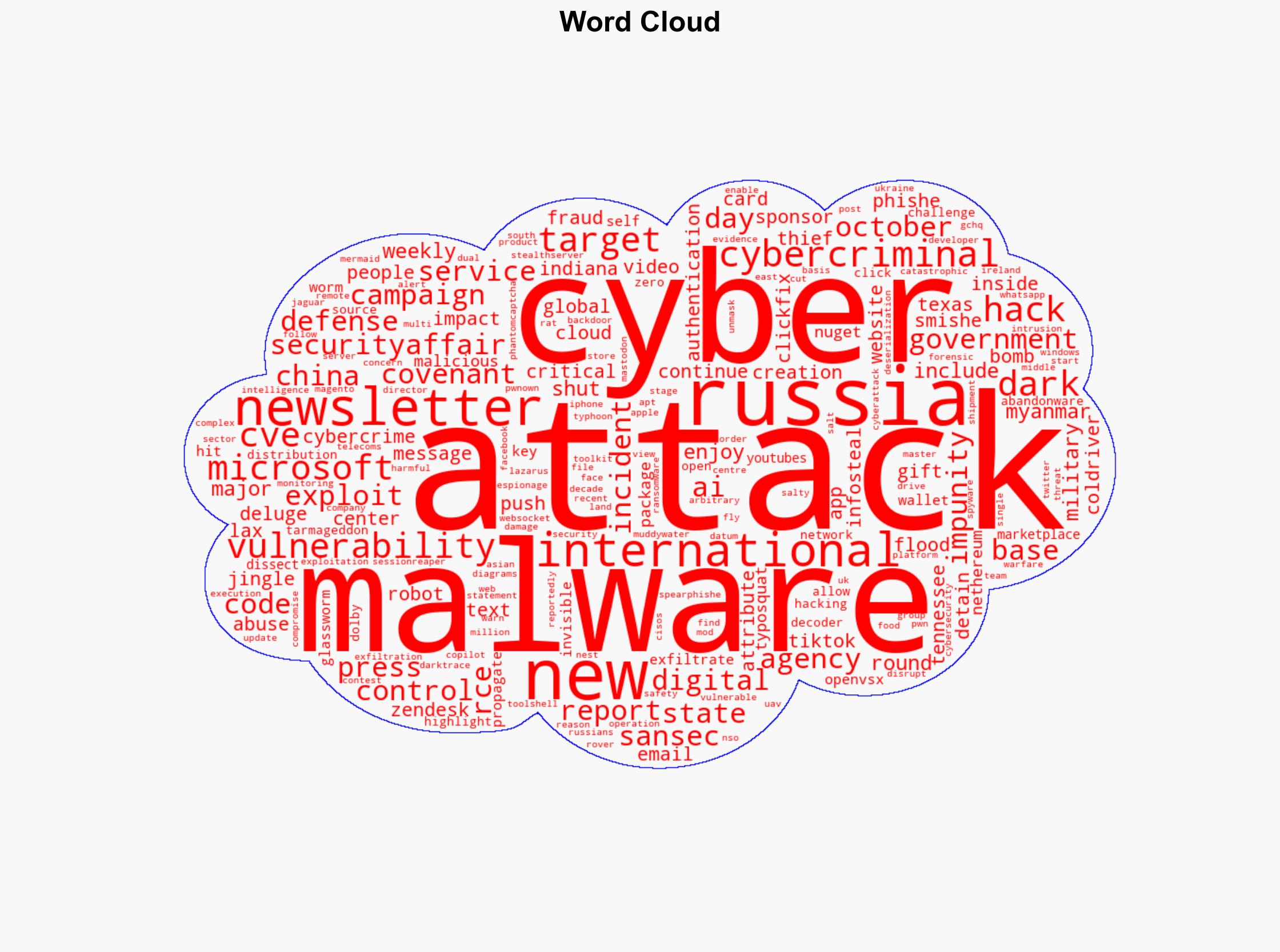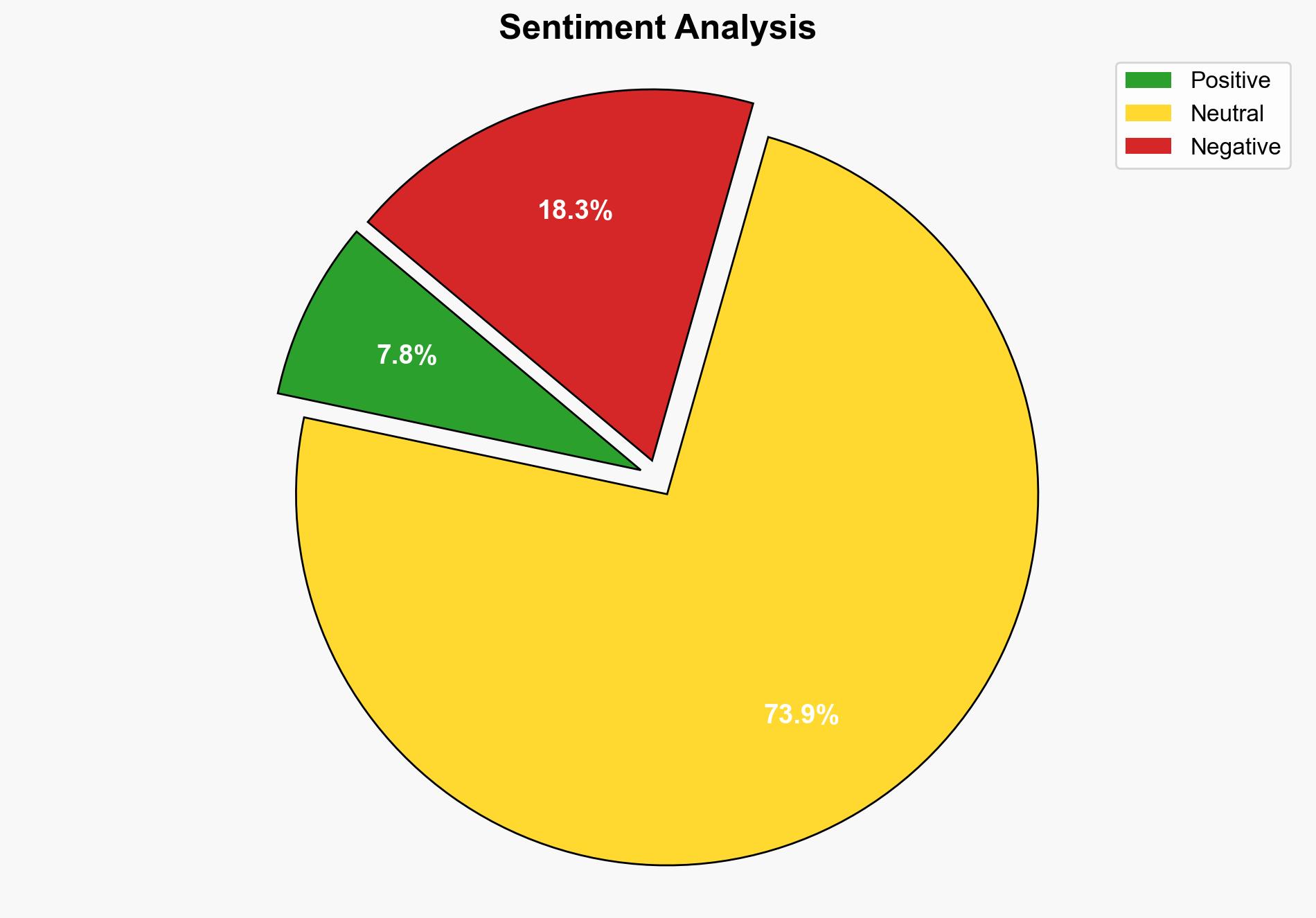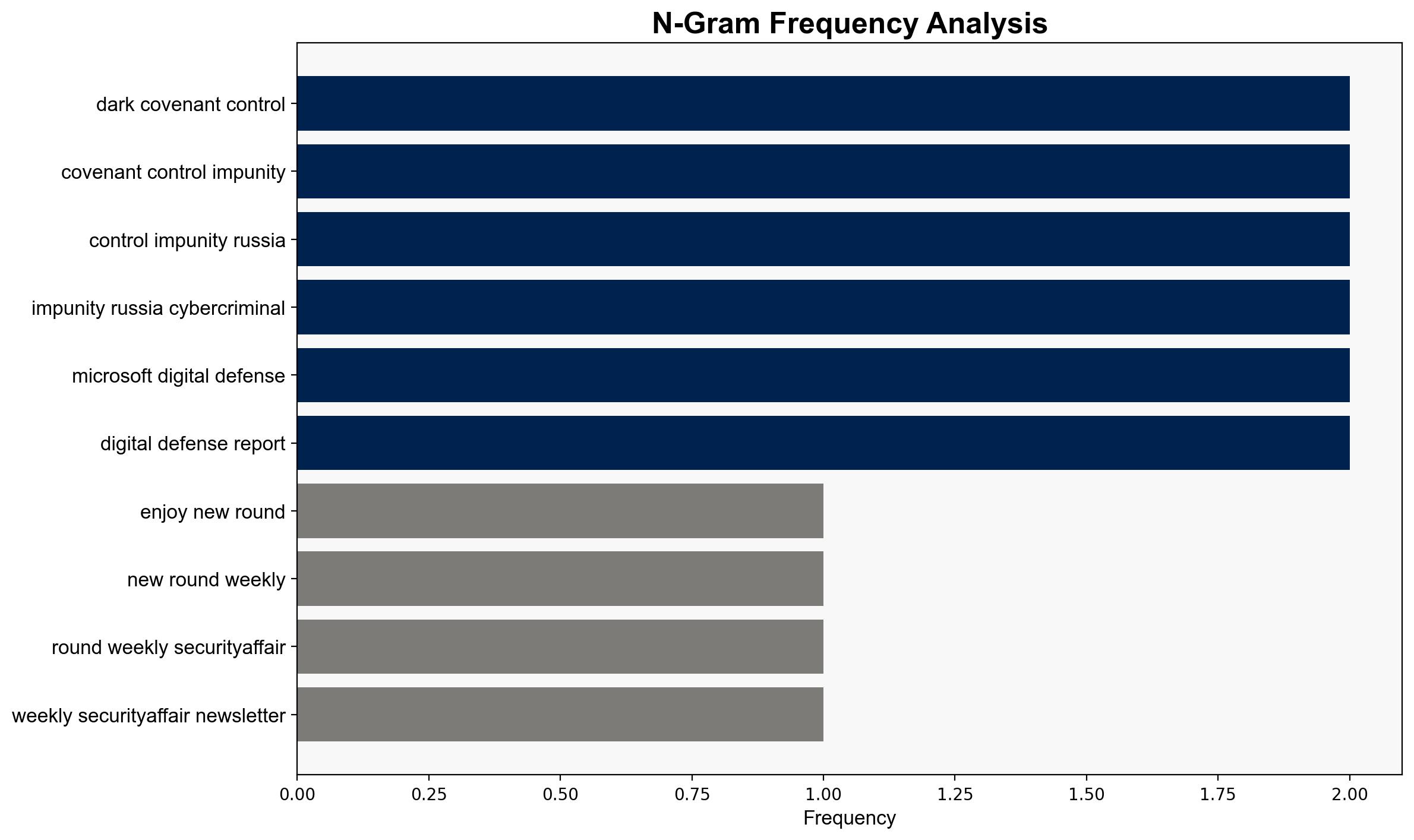Security Affairs newsletter Round 547 by Pierluigi Paganini INTERNATIONAL EDITION – Securityaffairs.com
Published on: 2025-10-26
Intelligence Report: Security Affairs newsletter Round 547 by Pierluigi Paganini INTERNATIONAL EDITION – Securityaffairs.com
1. BLUF (Bottom Line Up Front)
The most supported hypothesis is that state-sponsored cyber actors are increasingly targeting critical infrastructure and leveraging advanced malware tools for espionage and disruption. Confidence Level: High. Recommended action: Enhance international cooperation on cybersecurity measures and invest in advanced threat detection technologies.
2. Competing Hypotheses
1. **Hypothesis A**: State-sponsored actors, particularly from Russia and China, are intensifying cyber operations against critical infrastructure and government services to gain strategic advantages and disrupt geopolitical adversaries.
2. **Hypothesis B**: The surge in cyber incidents is primarily driven by independent cybercriminal groups exploiting vulnerabilities for financial gain, with state-sponsored activities being a secondary factor.
Using ACH 2.0, Hypothesis A is better supported due to the presence of sophisticated tools like the “Coldriver” malware attributed to Russian state sponsorship and the “MuddyWater” toolkit linked to international espionage. These indicate a strategic, rather than purely financial, motive.
3. Key Assumptions and Red Flags
– **Assumptions**: Hypothesis A assumes that the complexity and targets of the attacks are beyond the typical capabilities of independent cybercriminals. Hypothesis B assumes that financial motivations are the primary driver of cyber incidents.
– **Red Flags**: Lack of direct attribution evidence for some attacks; potential bias in attributing sophisticated attacks to state actors without conclusive proof.
– **Blind Spots**: Limited visibility into the internal operations of cybercriminal groups and potential underestimation of their capabilities.
4. Implications and Strategic Risks
– **Patterns**: Increasing frequency and sophistication of cyber attacks on critical infrastructure.
– **Cascading Threats**: Potential for significant economic disruption and loss of public trust in government services.
– **Escalation Scenarios**: Retaliatory cyber operations could lead to heightened geopolitical tensions and potential military confrontations.
5. Recommendations and Outlook
- Enhance international cybersecurity collaboration to share intelligence and best practices.
- Invest in AI-driven threat detection and response systems to mitigate advanced persistent threats.
- Scenario Projections:
- Best Case: Strengthened global cyber defense cooperation reduces the frequency and impact of attacks.
- Worst Case: Escalation of cyber warfare leads to significant geopolitical instability.
- Most Likely: Continued cyber skirmishes with periodic escalations, necessitating ongoing vigilance and adaptation.
6. Key Individuals and Entities
– Pierluigi Paganini (Author)
– Mentioned entities include Russian and Chinese state-sponsored groups, MuddyWater, Coldriver, and various cybercriminal organizations.
7. Thematic Tags
national security threats, cybersecurity, counter-terrorism, regional focus





